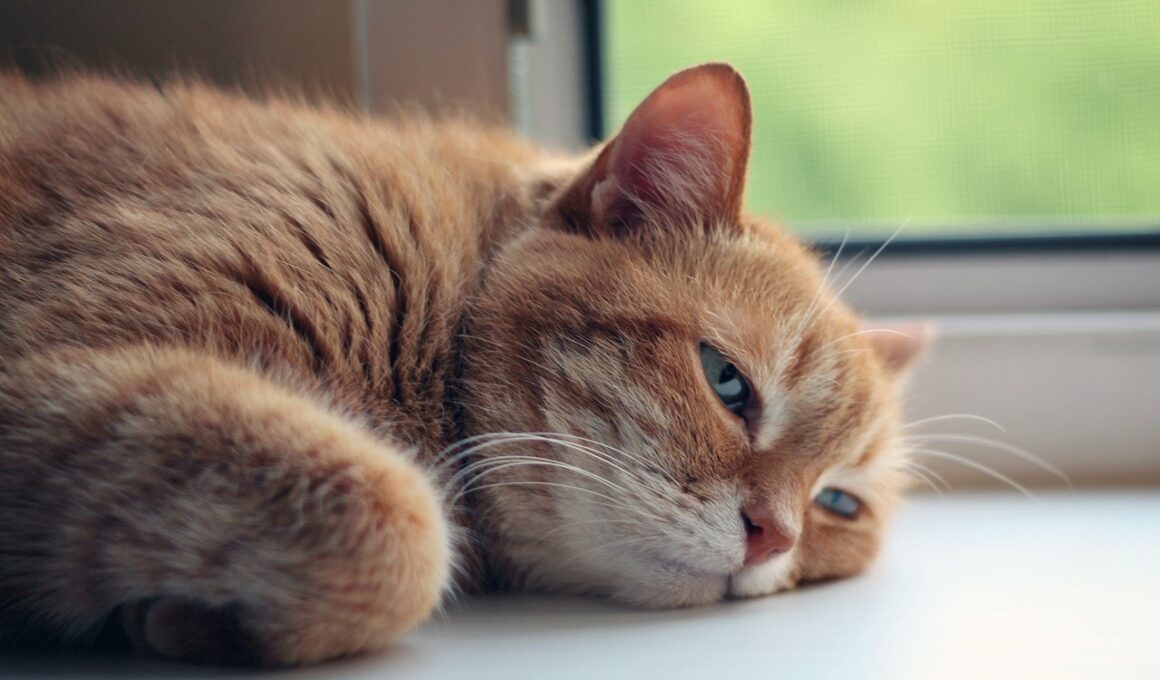Understanding Female Cat Heat: What Triggers the Cycle and How to Respond
Understanding the intricacies of feline behavior during heat is essential for cat owners. Female cats exhibit distinctive signs when they enter their estrous cycle, which can be challenging for owners to navigate. The cycle usually begins around six months of age and can occur multiple times a year. Signs of a cat in heat include increased vocalization, frequent urination, restlessness, and affectionate behavior toward their owners. These behaviors are typically driven by hormonal changes, mainly an increase in estrogen levels. Many owners may find their cat becomes more demanding and engaging when in heat, necessitating more attention and care. It’s crucial to recognize these signs as they point toward a natural reproductive cycle. How human caregivers respond can significantly affect the emotional state and psychological well-being of the cat. Owners should be prepared to ensure the environment is supportive, providing mental stimulation and physical activities to redirect their energy away from breeding behaviors. Cat owners can also consult with veterinarians about options like spaying if they wish to prevent future heat cycles. This proactive approach can lead to healthier and calmer cats.
Understanding Heat Cycles and Their Impact
The heat cycle of a female cat consists of several distinct phases, each with unique behaviors and biological changes. When a female cat enters her heat cycle, she experiences a phase called proestrus, lasting about one to two days. This is when she may exhibit signs of affection and increased playfulness. During estrus, which follows, a cat is receptive to mating and displays typical behaviors such as rolling, rubbing against surfaces, and yowling loudly. This phase can last from several days to weeks, repeating every two to three weeks during breeding season. After this period, if she does not mate, she moves into the diestrus phase, where her body experiences hormonal fluctuations. For owners, it can be overwhelming to witness these behaviors, especially if they are unprepared. Providing an enriched environment can help soothe your cat during these times. Engaging them in play, offering toys, and creating a quiet space can alleviate some behavioral anxieties. Understanding these phases empowers owners to effectively care for their feline companions during such stressful cycles.
Cats are particularly sensitive to environmental stimuli during heat, which can add to their stress. Many owners who observe their pets in heat report increased levels of anxiety and restlessness. Therefore, recognizing the symptoms of a cat in heat is essential for effective management. Female cats may vocalize more, which is an instinctive way to attract potential mates. Along with vocalization, they may display peculiar urination habits, marking their territory. This is a natural biological response and not a behavioral problem. It’s crucial for owners to maintain a routine during this time, keeping their cat engaged and mentally stimulated. Altering their routines can escalate the anxiety that cats feel while in heat. If the typical engaging activities and interactions are disrupted, it may worsen the stress for the feline. Keeping a consistent feeding schedule and playtime is vital. Moreover, providing a safe and comfortable space where they can retreat can help to minimize agitation. By creating an environment where their cat feels secure, owners can assist in managing the behavioral challenges that accompany the heat cycle.
Addressing Excessive Behavioral Issues
When your female cat is in heat, you may notice behaviors that seem excessive or unusual. Understanding these behaviors can help owners respond appropriately. Yowling or howling is common as she tries to signal her availability to potential mates. Many cats may also exhibit increased affection towards their owners, which can be both endearing and overwhelming. While some behaviors can feel disruptive, they are entirely natural. Aggression towards other pets could occur as well due to heightened hormones, so supervise interactions carefully. Redirecting this energy into nurturing playtime with interactive toys can result in a more balanced atmosphere at home. Using catnip-filled toys or feather wands can be excellent distractions. Consider providing various textures and temperatures for your cat to explore, which may lessen the urge to escape or vocalize. Ultimately, this period requires patience and understanding from the owners. Frequent reassurance through affection and gentle play can help maintain a calm environment. Moreover, if the behavior escalates and becomes unmanageable, seeking advice from a veterinarian might provide effective solutions tailored to your cat’s needs.
In addition to behavioral distractions, considering spaying can be a long-term solution to prevent future heat cycles. Spaying any female cat before her first heat cycle is generally recommended by many veterinarians. This procedure not only eliminates heat cycles but also contributes to the overall health of the cat, as it reduces the risk of certain cancers and infections. If spaying isn’t an immediate option, discuss with your veterinarian other interventions that can help manage behavioral changes during heat. Some medications can assist with emotional balance and hormonal control, helping to ease the transition during these challenging periods. Remember to evaluate all options based on your cat’s age, health, and needs. Each cat is unique, and spaying decisions should reflect the individual needs of the cat in question. Having open discussions with a veterinarian ensures that pet owners remain informed and can choose the ideal path for their furry companions. Providing a supportive framework, preparing emotionally and mentally for these cycles, can also foster a more robust relationship between owner and feline.
The Benefits of Understanding Your Cat
Understanding your cat’s heat cycle allows you to empathize more with its experiences. Cats experience biology very differently than humans, which makes it essential for owners to educate themselves on these phases. Various resources, such as veterinary advice, books, and online support groups, provide valuable insights related to feline health and behavior. An awareness of what your cat is going through not only enhances the bond owners share with their pets but also improves overall management strategies during these times. When expectations are properly set, cats experience less stress, and their owners also find the situation easier to cope with. Regular communication with a veterinarian about health changes and behavioral updates is crucial. Moreover, tracking your cat’s heat cycles on a calendar can assist you in planning ahead, both for your sanity and the cat’s comfort. If you anticipate heat cycles, you can prepare your environment and routines accordingly. The ultimate goal is ensuring that both you and your feline friend enjoy a peaceful coexistence despite the unleashing of nature’s instincts during these times.
In conclusion, understanding female cat behavior during heat is a multifaceted experience that requires care, empathy, and proactive management. Ensuring that your cat feels safe and secure during these times makes a significant difference in managing behaviors. Prepare by incorporating playtime, creating engaging environments, and considering long-term solutions such as spaying. Understanding the unique stages of your cat’s heat cycle can provide clarity as you face these situations. Consult with veterinarians when needed, to ensure optimal health for your pet. Being informed helps owners navigate this otherwise confusing experience while maintaining a supportive and loving bond with their cat. Cats flourish when they receive the right support, particularly in challenging situations like heat cycles. By establishing this type of environment, you can ensure a happier feline and a more harmonious home. Patience, understanding, and a proactive approach are essential in these times. With these strategies, your relationship with your feline companion can grow stronger as they navigate their biological needs. Remember to enjoy the affectionate moments while they last, as they are part of the beautiful bond shared between an owner and their cat.


